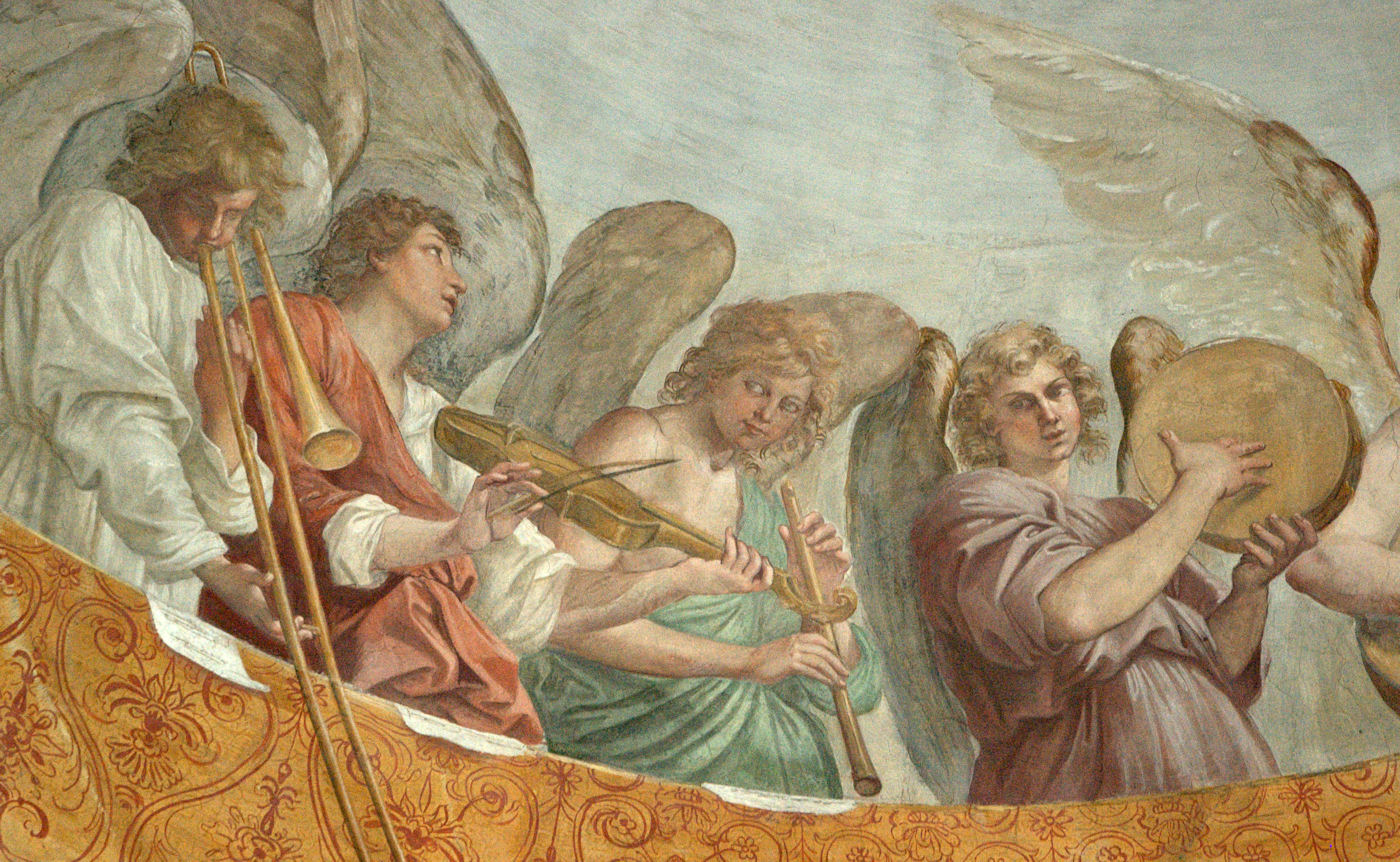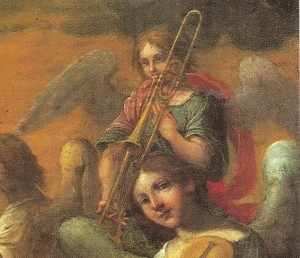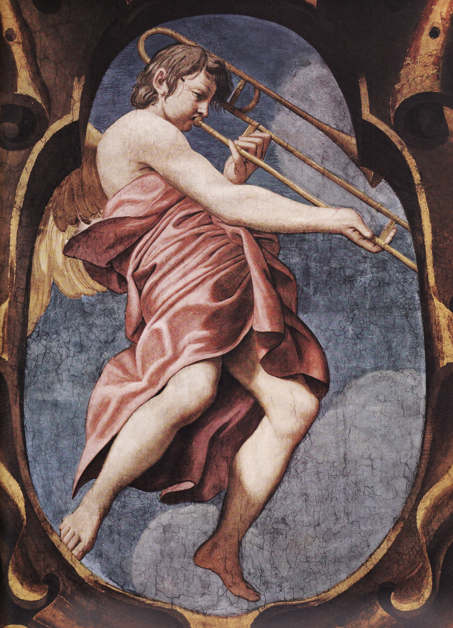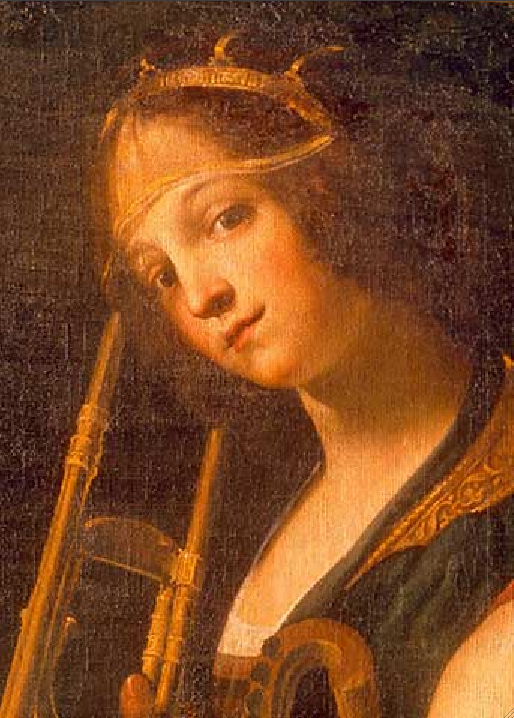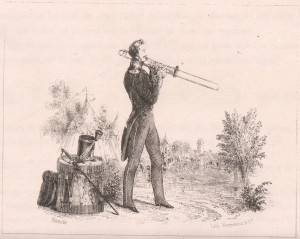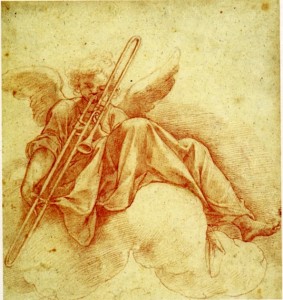THE TIMELINE:
BACKGROUND:
Work in Progress
This trombone history timeline, although it is more than 700 pages long and draws from more than 100 primary sources, is a work in progress. It began as a short handout outlining the history of the trombone for a brass literature course I taught at a different university several years ago. I’ve added to it steadily since then, using it for various classes. At some point I decided to go back and add sources, and I have continued including them since then, so the majority of the entries have sources. I still have a large amount of material—both pictures and text—to incorporate, and the timeline has obviously turned into something more than a class handout. The idea is to eventually winnow things down somewhat and publish the timeline commercially in book form; in the meantime, my hope is that this “evolving” version will be useful for my own students and others who might be interested in learning more about the history of the trombone.
Why this format and all this detail? Several reasons, I suppose. First, I enjoy looking at raw information and coming to my own conclusions. Trombone history is a surprisingly long, nuanced story that tends to defy generalization. Second, I think many of us, trombonists included, may not have an appreciation for the richness of the history of the trombone. There really is a lot there! Third, I like the linear approach of a timeline for presenting details. Although a timeline format can be weak in areas such as breadth and subtlety, it offers a compact presentation and clear logical flow, while also allowing the fundamentally impatient reader (like me) to jump around easily. Finally, I think the really fun, interesting stuff is often in the details, not in the broad, sweeping generalizations: a trio performance for Pope Clement VII, an international trombonist-spy in the early 16th century, trombone-playing nuns in the Italian Renaissance, an unfrocked German priest-turned-trombonist in Venice, a trombone quartet leading Beethoven’s funeral procession, an extraordinary trombone soloist in 19th-century New Orleans—these are not stories that are told in the typical encyclopedia summaries. I have enjoyed this research immensely myself, while gaining a greater appreciation for the colorful heritage of our great instrument!
My target audience is trombonists–high school, college, amateur, and professional trombonists–the approximate target audience, I suppose, of an organization like the International Trombone Association. I am less interested in quibbling over the exact publication date of a Bruckner symphony (or was that a revision? Or was that an unpublished revision?) than I am in simply laying out a basic outline or list, inasmuch as that can be done uncontroversially. In that respect, and in respect to my target audience, this timeline is essentially a practical didactic tool–something like a guide or textbook.
Sources
I make a ongoing effort to use a broad range of good sources. The bibliography will show more than 100 primary sources, in addition to a wide range of other respected sources, including a large number of current articles from such journals as Early Music, Journal of the American Musicological Society, The Galpin Society Journal, and Historic Brass Society Journal. If you notice a source in the timeline that you feel has been somehow discredited or improperly vetted, by all means, let me know, and I will consider correcting or deleting the related entry. Again, I stress that I am less interested in quibbling over things like when a piece was composed versus when it was premiered versus when it was published than in getting down a good, basic timeline with plenty of data.
I have not felt the need to make a distinction between the terms sackbut and trombone. I agree with those historians who assert that, for all intents and purposes, there is no useful difference between the two. The trombone has changed so little physically during its history that distinctions between sackbut and trombone are not necessary or even particularly helpful; for example, trumpet, horn, flute, and many other modern instruments have changed physically much more, yet they retain the same name through their respective histories. In addition, the Italian term trombone has been used continuously from the instrument’s inception in the 15th century to the present. For these reasons, I normally use the term trombone, although, when the original language is available and different terminology was used, I try to provide it.
The images on this website are either used by permission or are in the public domain. After reviewing this website with a university licensing and copyright expert and discussing it with a practicing attorney, here is my understanding: Public domain for artwork occurs after the death of the artist plus 70 years. In addition, recent legal decisions (e.g., Bridgeman v. Corel, 1999; Meshwerks v. Toyota, 2008; Feist v. Rural, 1991) have held that a threshold of originality is required for copyright and that “slavish” reproductions of public domain artworks, even those reproductions involving considerable expertise, do not reach a level of originality sufficient to carry copyright of their own. In its 2008 decision, for example, the US Tenth Circuit Court of Appeals wrote, “[T]he law is becoming increasingly clear: one possesses no copyright interest in reproductions…when these reproductions do nothing more than accurately convey the underlying image.”
This website is not an academic journal, obviously, but it may also be useful to mention here that the fact that some academic journals continue to pay museums and image libraries for reproductions of public domain artworks is largely a matter of tradition and is immaterial as a legal argument. Copyright terms have always been constitutionally limited, and public domain exists for an important societal reason; for more on the ethical and legal ramifications of this subject, see the Duke School of Law Center for the Study of the Public Domain. For more on the legal and ethical ramifications of claiming copyright where no copyright exists, see, among other sources, “Copyfraud” (New York University Law Review), by Jason Mazzone, professor of law at Brooklyn Law School. Finally, on the subject of photographs of public domain artworks, for a recent interview of an intellectual law specialist at the University of Virginia Law School, see here.
Be sure to check the blog for updates to the timeline. I add new items to the timeline fairly regularly, and often I also discuss items of interest on the blog as I add them to the timeline. Readers can comment on individual blog entries rather than commenting via email if they wish (comments are screened for spam then posted regularly). Specific categories of the blog relevant to the timeline include trombone history, alto trombone, and trombone images. The website also has a fairly good search function (upper-right of each page) that may be helpful for finding specific entries.
Comments
 Again, this is a work in progress. Comments and input are most welcome. Enjoy!
Again, this is a work in progress. Comments and input are most welcome. Enjoy!
